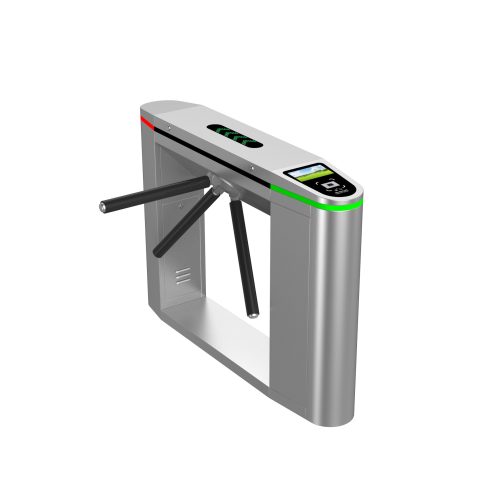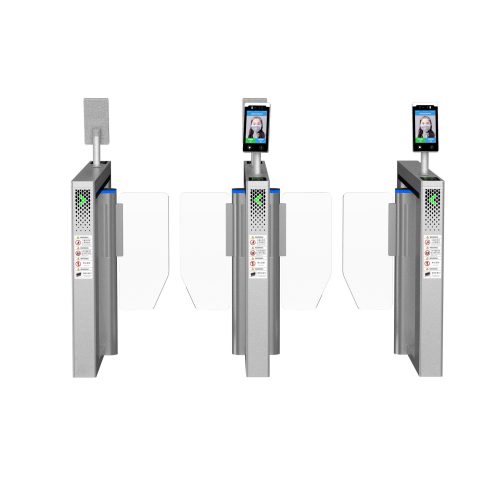Access control systems have become an essential part of modern security, whether in corporate offices, transportation hubs, or public venues. Among the most widely used pedestrian access solutions are speed gates and turnstiles. While both serve the purpose of managing entry and exit, they are designed for different levels of security, user experience, and architectural needs.
So, what is the difference between a speed gate and a turnstile? Let’s break it down.
What is a Turnstile?
A turnstile is a mechanical or electronic access control device that allows one person to pass at a time. It typically uses rotating arms, barriers, or gates to regulate pedestrian flow.
Key Features of Turnstiles:
- Controlled entry:Ensures only one person passes at a time.
- Variety of designs: Tripod, waist-high, full-height, swing, and sliding turnstiles.
- Durability: Built to handle heavy pedestrian traffic.
- Security level:Varies from basic (tripod) to high-security (full-height).
Common Applications:
- Metro and train stations
- Sports stadiums
- Amusement parks
- Factories and industrial sites

What is a Speed Gate?
A speed gate is a modern access control solution that uses fast-moving glass or acrylic barriers, often combined with infrared sensors, to allow or deny entry. They are sleek, efficient, and designed for environments where both aesthetics and speed are important.
Key Features of Speed Gates:
- Fast and efficient: Barriers open and close quickly to manage large flows of people.
- Modern design: Slim, stylish, and suitable for high-end buildings.
- Barrier types: Sliding or swinging glass panels.
- Integration: Easily integrates with RFID cards, biometrics, or QR code scanners.
Common Applications:
- Corporate office buildings
- Airports and transportation hubs
- Government buildings
- High-security business centers

Speed Gate vs. Turnstile: Key Differences
| Aspect | Turnstile | Speed Gate |
| Design | Mechanical arms or barriers, rugged look | Sleek glass or acrylic barriers, modern design |
| Speed | Moderate pedestrian flow | High-speed access, faster throughput |
| Security Level | Ranges from medium (tripod) to very high (full-height) | Medium to high, with sensor-based detection |
| User Experience | More physical, sometimes less convenient | Smooth, silent, and user-friendly |
| Applications | Public transport, stadiums, industrial facilities | Offices, airports, corporate lobbies |
| Cost | Generally more affordable | Higher cost due to technology and design |
Which One Should You Choose?
The choice between a speed gate and a turnstile depends on your priorities:
- Choose a turnstile if you need cost-effective, durable, and secure crowd control, especially in high-traffic public areas.
- Choose a speed gate if you value aesthetic appeal, fast throughput, and seamless integration with modern access control systems in corporate or commercial environments.
Final Thoughts
While both speed gates and turnstiles serve the same purpose—managing pedestrian access—they are designed for different environments and expectations. A turnstile offers reliable and rugged control, making it ideal for places like train stations or stadiums. A speed gate, on the other hand, provides a faster, smoother, and more stylish solution, perfect for modern office buildings and airports.
At Kapaisi, we manufacture and supply both turnstiles and speed gates, offering customized solutions (OEM/ODM) to meet the unique needs of different projects. Whether you need durability, design, or advanced security integration, we provide the right access control solution for your facility.








